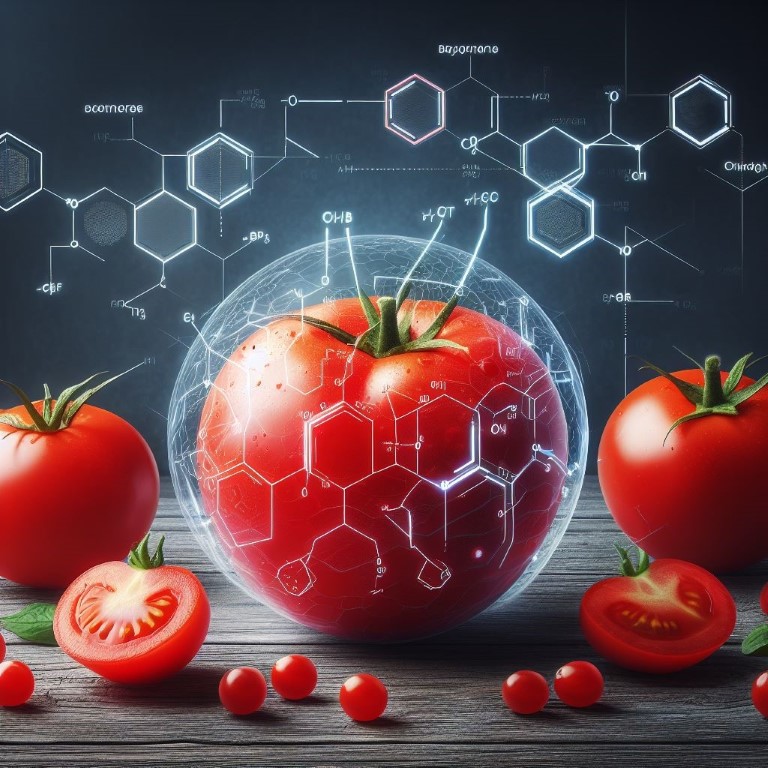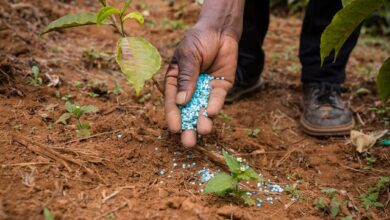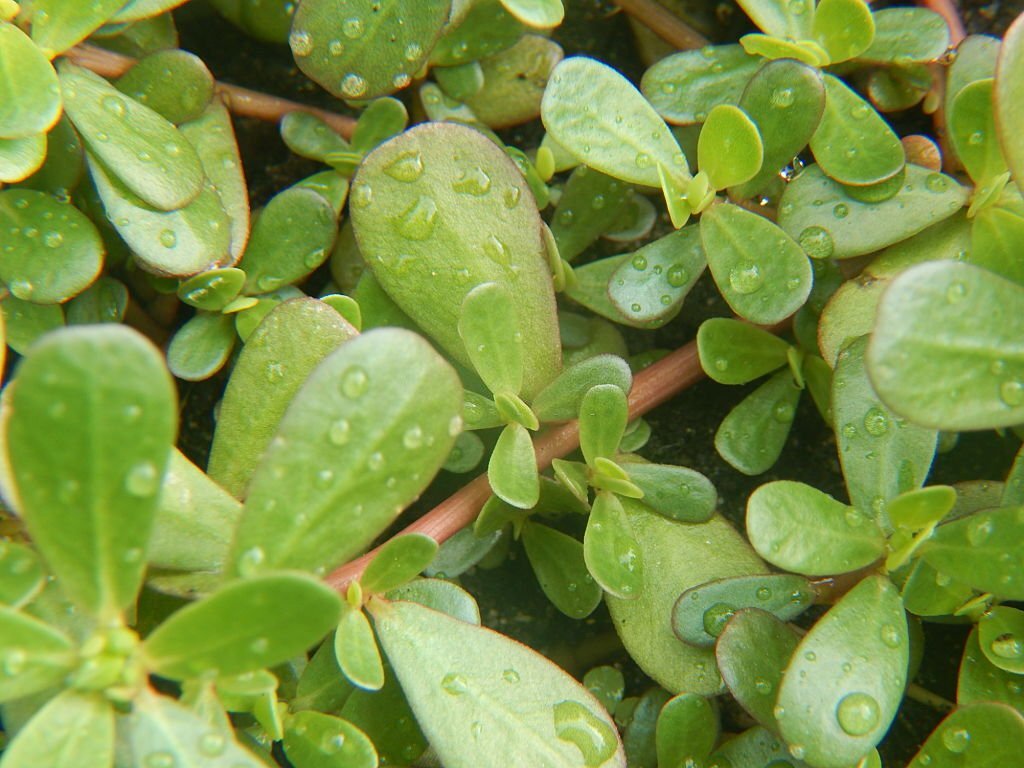The Science Behind Why Tomatoes Turn Red: Unraveling the Mystery

Have you ever wondered why tomatoes magically transform from a vibrant green to a ripe, juicy red? It’s like nature’s own little magic trick! Well, get ready to have your curiosity satisfied as we dive deep into the fascinating science behind this color-changing phenomenon. In this blog post, we will unravel the mystery of why tomatoes turn red and uncover the intricate biological processes that make it all possible. Get ready for a journey through genetics, pigments, and ripening stages – prepare to be amazed by the secret life of tomatoes!
Introduction: The Fascinating Journey of Tomatoes
Tomatoes are one of the most commonly consumed fruits (yes, they are technically a fruit!), loved by people all over the world for their juicy and sweet flavor. They are used in various dishes, from salads to sauces, and even enjoyed as snacks. But have you ever wondered why tomatoes turn red when they ripen? This seemingly simple question has puzzled scientists for decades, and it was only recently that the mystery was finally unraveled.
The Evolution of Tomato Color
To understand how tomatoes turn red, we must first look at their evolution. It is believed that tomatoes originated in South America thousands of years ago and were then brought to Europe by Spanish explorers in the 16th century. However, these original wild tomato species did not have the characteristic red color that we know today.
The ancestral species had yellow or green fruits due to high levels of chlorophyll pigments present in them. Over time, through natural selection and human cultivation practices, varieties with different colors emerged – including orange, pink, purple, and ultimately red.
Genetics Behind Tomato Color
As with any plant or organism’s traits, genetics plays a significant role in determining the color of tomatoes. The gene responsible for red color in tomatoes is called “Lycopersicon esculentum fruit color 1” or simply “FLC1.” This gene codes for an enzyme called phytoene desaturase, which converts a precursor molecule, called phytoene, into another pigment called lycopene.
Lycopene is the pigment that gives ripe tomatoes their vibrant red color. Interestingly, this same gene also controls the production of other pigments, such as beta-carotene and lutein, which can result in yellow or orange-colored tomatoes.
Environmental Factors
While genetics is a critical factor in determining tomato color, environmental factors also play a significant role. One of the main environmental factors that affect tomato ripening is sunlight. Tomatoes need plenty of sunlight to produce lycopene and other pigments – without it, they will remain green and unripe.
Temperature also plays a role in tomato ripening. Cooler temperatures tend to slow down the ripening process, while warmer temperatures speed it up. This is why you may find that tomatoes grown in colder climates take longer to ripen than those grown in warmer regions.
History of Tomatoes and their Color
The history of tomatoes can be traced back to ancient civilizations, with evidence of their cultivation found in Aztec and Incan ruins. However, the original color of tomatoes was not red – it was actually yellow or orange.
At this time, tomatoes were still predominantly yellow or orange in color. It wasn’t until the 19th century that red tomatoes started to appear, thanks to advancements in plant breeding techniques.
One of the key figures in this development was Thomas Jefferson, who grew over 200 varieties of tomatoes on his estate. He experimented with crossbreeding different varieties and eventually created a tomato with larger fruits and a deep red color – the ancestor of many modern tomato cultivars.
But why did red become the dominant color for tomatoes? The answer lies in the science behind how plants produce pigments.
Tomatoes contain two main pigments – chlorophyll and carotenoids. Chlorophyll is responsible for giving plants their green color and is essential for photosynthesis. Carotenoids, on the other hand, are responsible for producing yellows, oranges, and reds in plants.
Understanding the Chemistry Behind Why Tomatoes Turn Red
Tomatoes are a staple in many cuisines around the world, loved for their bright red color and juicy flavor. But have you ever wondered why tomatoes turn red as they ripen? The answer lies in the chemistry behind this process.
At its core, the ripening of tomatoes is a biochemical process that involves several chemical reactions. This process is controlled by a hormone called ethylene, which triggers the production of enzymes that break down cell walls and soften the fruit. When it comes to understanding why tomatoes turn red, there are three key components to consider: pigments, acids, and sugars.
Pigments
The most important pigment involved in the ripening of tomatoes is lycopene. Lycopene is a carotenoid pigment that gives ripe tomatoes their vibrant red color. In unripe green tomatoes, lycopene exists in an inactive form within cells known as chromoplasts. As the tomato begins to ripen, enzymes are activated which convert lycopene into its active form, giving the tomato its characteristic red hue.
Acids
Unripe green tomatoes contain high levels of organic acids such as malic acid and citric acid. These acids give unripe tomatoes their tart taste but also prevent lycopene from being converted into its active form. As the tomato ripens, these acids start to decrease due to enzyme activity and allow lycopene conversion to occur.
Sugars
In addition to pigments and acids, sugar levels also play a crucial role in determining the color of a ripe tomato. As tomatoes ripen, starches are converted into simple sugars such as glucose and fructose. These sugars contribute to the sweetness of ripe tomatoes and help enhance the red color by providing energy for lycopene production.
While these three components – pigments, acids, and sugars – are key players in the ripening process, there are other factors involved as well. For example, temperature and light can also affect the ripening of tomatoes by influencing enzyme activity.
Factors Affecting Tomato Color Change
Tomatoes are a staple ingredient in many dishes and are known for their vibrant red color. But have you ever wondered why they turn red when ripening? The process of tomato color change is influenced by various factors, both internal and external. In this section, we will delve into the different factors that affect the transformation of green tomatoes to their iconic red hue.
1. Pigment Production
The most crucial factor affecting tomato color change is the production of pigments. Tomatoes contain two main pigments responsible for their color – chlorophyll and carotenoids. During the early stages of growth, young tomatoes have high levels of chlorophyll, giving them a green appearance. As they mature, the cells stop producing chlorophyll and instead produce carotenoids, leading to the characteristic reddish-orange hue of ripe tomatoes.
2. Sunlight Exposure
Sunlight plays a significant role in triggering tomato color change. Tomatoes require sunlight to produce energy through photosynthesis, which aids in pigment production and ripening process. Lack of sunlight or shading can result in uneven ripening or pale-colored tomatoes.
3. Temperature
Temperature also affects tomato ripening and color change. Studies have shown that warmer temperatures accelerate the maturation process while lower temperatures slow it down. This is because enzymes involved in pigment production function more efficiently at higher temperatures.
4.Breeding Varieties
Different varieties of tomatoes may exhibit varying rates and patterns of color change due to genetic differences. For example, heirloom varieties tend to ripen more slowly and may have a more diverse color range, while modern hybrid varieties are bred for a consistent red color.
5. Ethylene Gas
Ethylene is a natural plant hormone that triggers ripening in many fruits, including tomatoes. As the fruit matures, it produces its own ethylene gas, speeding up the ripening process. Additionally, exposure to external sources of ethylene, such as other ripe fruits or even car exhaust fumes, can also accelerate tomato color change.
6. Nutrient Availability
The availability of essential nutrients can impact tomato color change. A deficiency in nutrients like potassium and magnesium can lead to pale or blotchy-colored tomatoes. Adequate nutrition is crucial for healthy plant growth and pigment production.
7. Disease or Pests
Disease or pest infestations can also affect tomato color change. Insects like aphids and whiteflies can damage leaves and disrupt photosynthesis, leading to uneven ripening and poor pigmentation in the fruit. Similarly, diseases like bacterial spot and tomato mosaic virus can cause discoloration or mottling of the fruit.
In conclusion, several factors influence the transformation of green tomatoes to their iconic red hue, including pigment production, sunlight exposure, temperature, breeding varieties,
The Role of Carotenoids in Tomato Coloration
Tomatoes are well-known for their bright red color, but have you ever wondered what exactly causes them to turn this vibrant hue? While the answer may seem simple – ripening – there is actually a complex scientific process behind it. One key element in tomato coloration is the presence of carotenoids.
Carotenoids are natural pigments found in plants that give fruits and vegetables their bright yellow, orange, and red colors. In tomatoes, these pigments are responsible for the iconic red hue. The two main types of carotenoids found in tomatoes are lycopene and beta-carotene.
Lycopene is a deep red pigment that is highly abundant in ripe tomatoes. It belongs to a class of carotenoids called “acyclic” carotenoids because of its linear structure without any rings or branches. On the other hand, beta-carotene is an “acyclic” carotenoid that has a more yellow-orange color.
The role of carotenoids in tomato coloration begins during the early stages of growth when the fruit starts developing on the plant. As the tomato grows and matures, green chlorophyll pigments start breaking down, revealing the underlying yellow-orange hues from beta-carotene.
Influence of Harvesting and Storage on Tomato Color Change
Harvesting plays a significant role in the color change of tomatoes. When a tomato reaches its optimal level of ripeness, it starts to produce ethylene gas. This gas acts as a signal for the tomato plant to stop producing chlorophyll, which gives green color to unripe fruits, and start producing other pigments like lycopene and beta-carotene, responsible for the iconic red hue. However, if a tomato is harvested too early or too late, this process can be disrupted, resulting in an uneven or dull color.
After being harvested, tomatoes go through another critical stage that influences their final color – storage. Temperature and light exposure are vital factors during this phase. Tomatoes stored at higher temperatures tend to ripen faster due to increased ethylene production but with less intense colors compared to those stored at lower temperatures.
Fun Facts about Tomato Pigments and Their Uses
Tomatoes are not only delicious and versatile, they also have a fascinating history when it comes to their vibrant red color. The deep crimson hue of ripe tomatoes is due to the presence of pigments called carotenoids, particularly lycopene and beta-carotene. In this section, we will explore some fun facts about tomato pigments and their uses.
| Fact | Information |
| 1. | Lycopene is responsible for the red color of tomatoes and is also found in watermelon, pink grapefruit, and guava. Tomatoes have the highest concentration of lycopene among fruits. |
| 2. | Lycopene starts as a green pigment in unripe fruits and turns red as the fruit ripens, with the help of enzymes that convert chlorophyll. |
| 3. | Tomatoes with higher lycopene levels tend to have a deeper red color, and smaller varieties may be more intensely red. |
| 4. | Lycopene, besides coloring, is a powerful antioxidant that can protect against cell damage and reduce the risk of certain diseases. |
| 5. | Beta-carotene is found in orange vegetables like carrots and contributes to the yellow-orange hue in some tomato varieties. |
| 6. | Lycopene and beta-carotene are used as natural food dyes in processed foods such as ketchup, sauces, and salad dressings. |
| 7. | Tomato pigments have been used in cosmetics; in ancient Rome, tomato pulp was used for a rosy glow on cheeks. |
| 8. | Lycopene and beta-carotene, with their antioxidants, are used in skincare products to protect against UV damage and improve skin health. |
| 9. | Tomatoes with higher lycopene levels tend to be sweeter as sugars convert during ripening, making ripe tomatoes sweeter than unripe ones. |
| 10. | Cooking tomatoes increases the bioavailability of lycopene, making it easier for our bodies to absorb, especially when cooked with fats. |
Conclusion
After delving into the science behind why tomatoes turn red, it is clear that this process is a complex and intricate one. From the initial production of carotenoids in the chloroplasts to their conversion into lycopene and other pigments, numerous biochemical pathways and genetic factors are at play.
One of the key findings in this study is the crucial role played by ripening hormone ethylene. Without its action on genes such as PSY1 and CRTISO, tomatoes would remain green and unripe. The interplay between ethylene, carotenoids, and other compounds like auxins also plays a significant role in controlling the rate of tomato ripening.
Furthermore, environmental factors such as temperature, light exposure, soil quality, and water availability can all affect how quickly or slowly a tomato turns red. This highlights the importance of optimal growing conditions for farmers to produce high-quality tomatoes with vibrant red hues.
Moreover, understanding the science behind tomato ripening has allowed researchers to develop techniques for prolonging shelf life and enhancing flavor. For example, manipulating ethylene levels through controlled atmosphere storage or using modified atmospheres can delay ripening and maintain firmness in tomatoes for longer periods.
FAQs
Why do tomatoes turn red?
The main reason why tomatoes turn red is due to a pigment called lycopene. Lycopene is a type of carotenoid, which is a natural compound responsible for giving fruits and vegetables their vibrant colors. As the tomato ripens, the chlorophyll (the green pigment) breaks down and allows the lycopene to become more visible, resulting in the bright red color we associate with ripe tomatoes.
Are there any health benefits to eating red tomatoes?
Yes, there are many health benefits associated with eating ripe red tomatoes. Lycopene has been linked to numerous health benefits such as reducing the risk of certain types of cancer, improving heart health, and promoting healthy skin. Tomatoes also contain high levels of antioxidants and vitamins C and K.
Do all varieties of tomatoes turn red when ripe?
No, not all varieties of tomatoes turn red when ripe. There are actually over 10,000 different varieties of tomatoes that come in various shapes, sizes, and colors. Some may ripen into shades of yellow, orange, or even purple. However, it is important to note that regardless of color, all ripe tomatoes contain lycopene.
Can I speed up the ripening process for my green or unripe tomatoes?
Yes! There are a few methods you can try to speed up the ripening process for your green or unripe tomatoes. One method is to place the tomatoes in a paper bag with a ripe banana or apple. The ethylene gas produced by these fruits can help ripen the tomatoes faster. Another method is to place the tomatoes in a warm, sunny spot and rotate them occasionally to ensure even ripening.
Can I eat green tomatoes?
Yes, you can eat green tomatoes, but they may not be as flavorful or sweet as ripe red tomatoes. Green tomatoes are often used in cooking and can be fried, pickled, or added to sauces and chutneys. They also contain many of the same nutrients as ripe red tomatoes.
How should I store my ripe red tomatoes?
Ripe red tomatoes should be stored at room temperature, away from direct sunlight. If you need to keep them for longer than a few days, you can store them in the refrigerator, but this may affect their flavor and texture. It is best to use ripe red tomatoes within 2-3 days after they have ripened fully.








